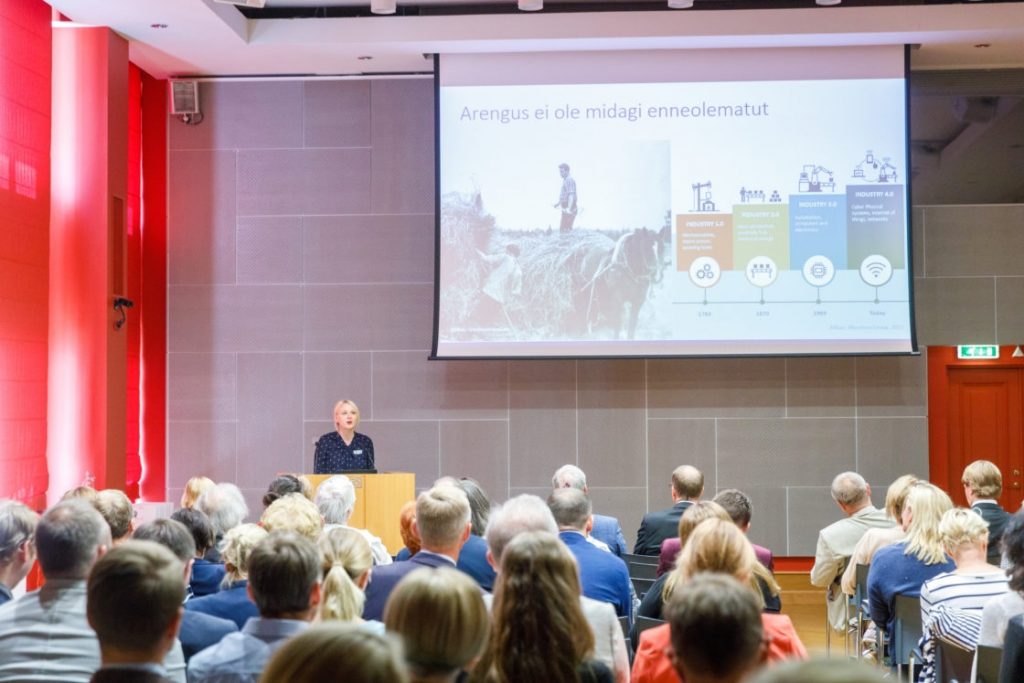Legal status of workers needs broader definition
Working relationships have diversified and a number of new forms of work have emerged next to the classical ones. This makes the relationship increasingly difficult to define, and leaves a significant amount of workers without work related protection and social security guarantees.

Expert Johanna Vallistu from the Foresight Centre explains that the organisation of work has undergone such drastic changes over the past decades that superior-subordinate relationships and consequently the working relationships are now much more difficult to define. “A worker employed under an employment contract is the best protected in terms of their working relationship and social protection; other workers do not enjoy a similar protection today. The Estonian labour law does not recognise the people who work under the law of obligations or via a platform as workers; yet they still need protection and social guarantees when these forms of work provide their main income,” Vallistu said. The percentage of people working under the law of obligations in Estonia is on the rise; while in 2008–2013 their percentage was only 3–4% of the work force, in 2017 this reached 6.4%, or approximately 35,000 people.
Prof. Merle Erikson from the University of Tartu and Annika Rosin, PhD. from the University of Turku (Finland) mapped the options for the legal status of workers in Estonia, and analysed whether the legal solutions in other countries could also suit Estonia. All this was done in the framework of the study commissioned by the Foresight Centre.
Europe is starting to become more aware that protection and social security guarantees related to working relationships should be available to all vulnerable workers, regardless of the legal format of their participation on the labour market, be it a work contract, a contract under the law of obligations, sole proprietorship, or work intermediated by a company.
Many countries, such as Germany, Spain, or the UK, have adopted the category of economically dependent workers to improve flexibility and offer protection to a larger number of workers. This term denotes an independent contract partner who depends on mainly one employer.
Legal literature proposes broadening the work related protection to all the vulnerable workers or labour market participants who work individually or participate in the labour market, incl. volunteer workers. Today, however, these proposals remain fairly difficult to put to practice.
In Estonia, we need to consider the legal status of platform workers as well as the protection of teleworkers, because it is not necessarily clear whether they are employees, independent contract partners, sole proprietors, or free-lancers. We need to decide who is responsible for their safe and healthy working conditions.
“Regardless of their legal status, people who work and thus earn an income need protection and social guarantees. In our future scenarios of the labour market we will focus on platform work, casual work and employment gaps, which is why we need to take a broader look at the opportunities that the people as well as the state have in adapting to the normalisation of new types of working relationships. In light of this, we welcome the intention expressed by the Ministry of Social Affairs to amend the legal acts on employment contracts and occupational health and safety. One purpose of this is to better protect the working conditions and safety of people working under the law of obligations, as well as teleworkers,” explained Vallistu, who is in charge of the study project on the nature of work in the future, which the Foresight Centre will conclude this autumn.
The study on the legal status of workers, commissioned within the framework of the study on the future of the labour market of the Foresight Centre, was conducted by Prof. Merle Erikson from the University of Tartu and Annika Rosin, PhD. from the University of Turku. The purpose of the study was to see how the legal status of workers is changing in the context of new working relationships; the study will result in a comparative analysis of different legal statuses of workers.
Full text of the study report and the summary can be read here (in Estonian): https://arenguseire.ee/uurimissuunad/tuleviku-too/
Latest news
-
23.04 2024Price spikes see people take charge of their electricity use
People in Estonia have begun to consciously manage their electricity consumption during periods of high prices. This has helped reduce costs and better balance energy supply and demand. However, the potential for managing electricity consumption in Estonia is double that which is currently being seen, and its full implementation would require the amendment of legislation.

 An independent think tank at the Riigikogu
An independent think tank at the Riigikogu